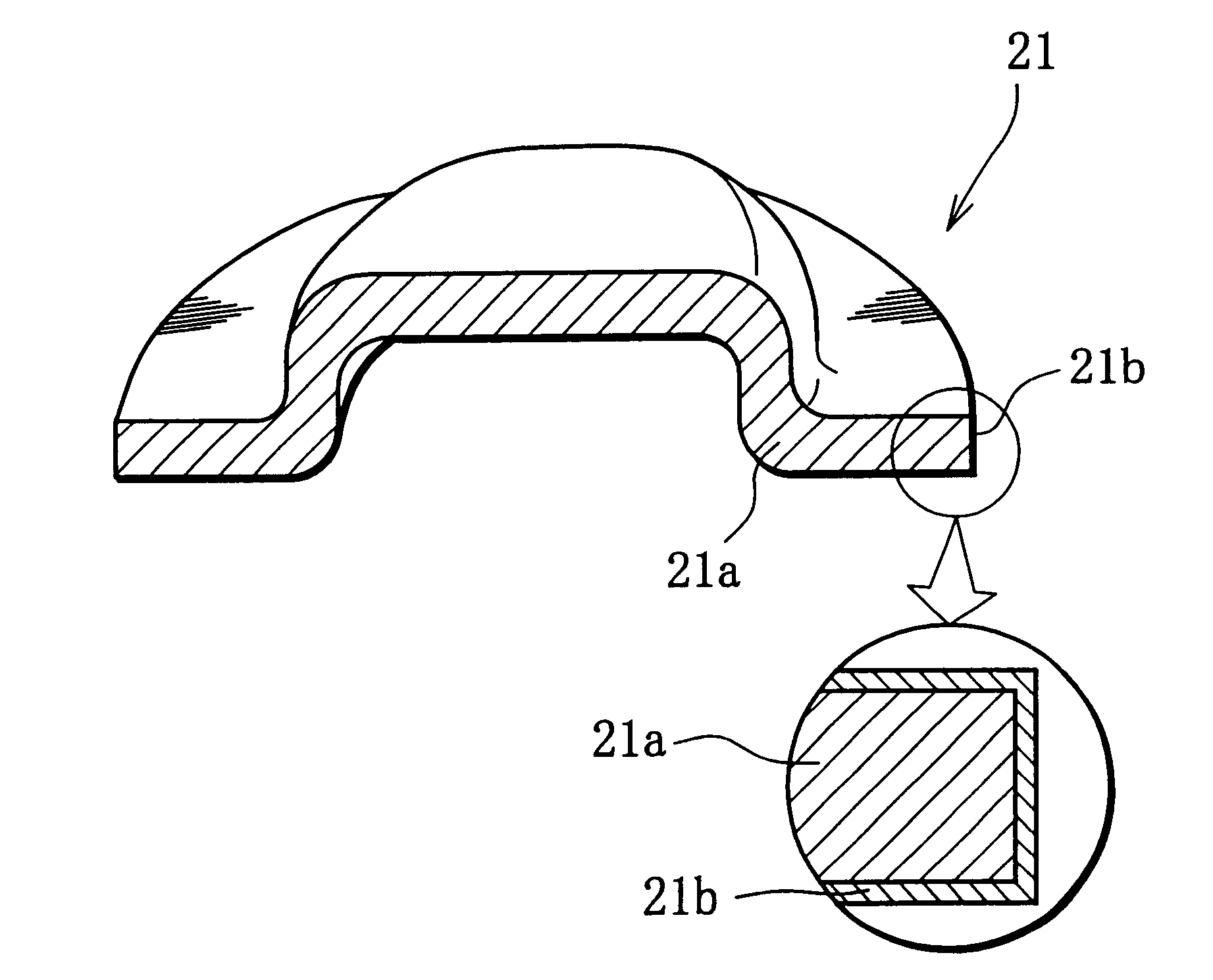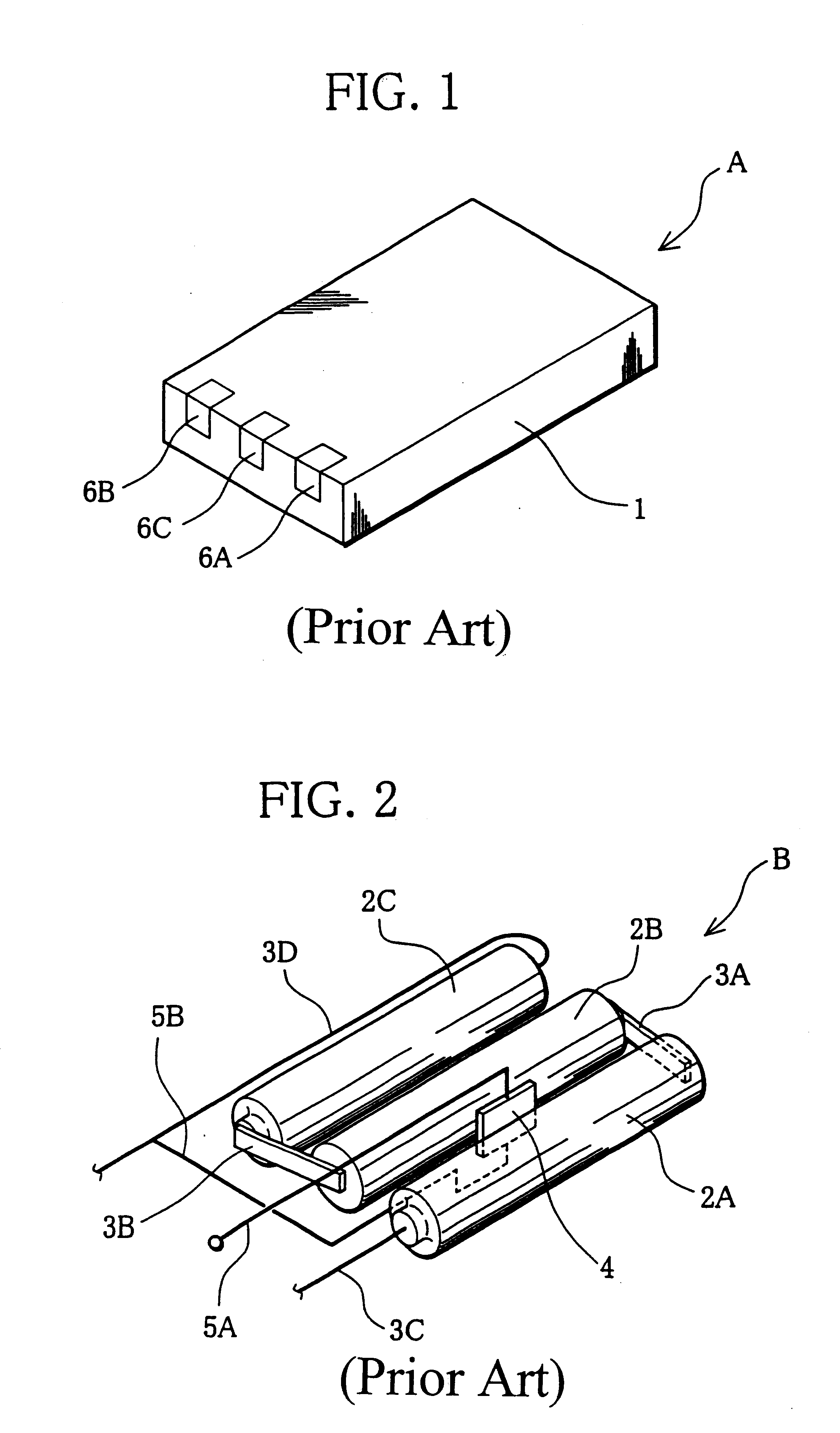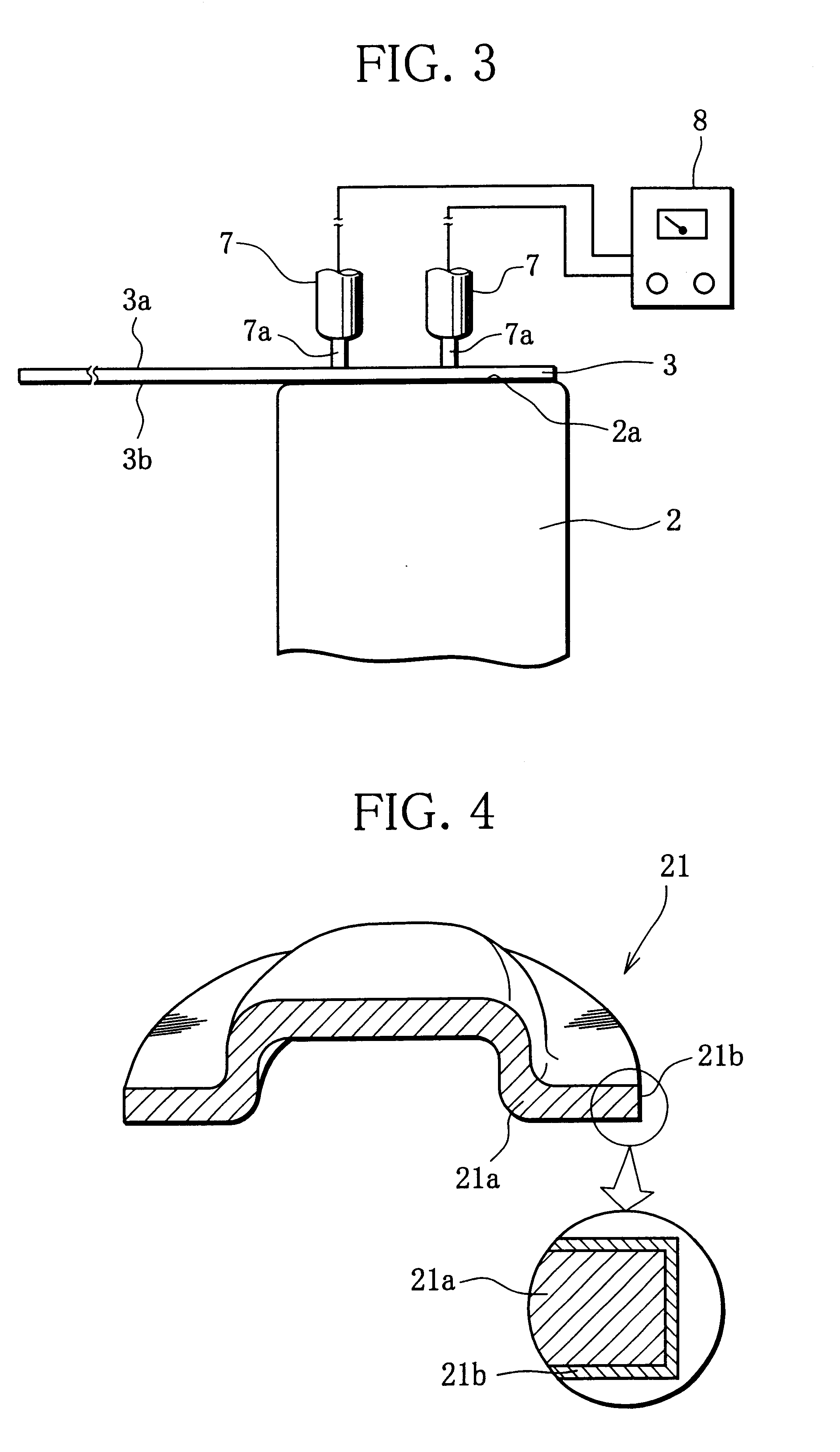Battery, lead member for battery connection, and battery pack using the same
a lead member and battery technology, applied in the field of batteries and lead members, can solve the problems of complicated irregular surfaces, two members not being uniformly in contact with each other, and difficulty in increasing the strength of weld between the battery container and the lead member
- Summary
- Abstract
- Description
- Claims
- Application Information
AI Technical Summary
Benefits of technology
Problems solved by technology
Method used
Image
Examples
examples 7 to 11
Layers of an Ni--Fe alloy with the thicknesses shown in Table 2 were formed on battery containers for varied plating times with use of a plating bath that is adjusted in composition so that the Fe contents of the layers were 20% by atomic percentage. Then, 30 batteries were assembled using the individual battery containers, and the aforesaid lead member (formed of a Ni-plated steel sheet) was put on the bottom surface of each battery container. The lead member and the battery container were subjected to resistance welding in a manner such that they are supplied with a welding current of 1.5 kA under a pressure loading of 22 N from the welding electrodes.
The value of this pressure loading is the sum of forces applied to the two welded electrodes. The forces applied individually to the electrodes are set at substantially equal values.
The weld strength was measured in the same manner as in the cases of Examples 1 to 6. Table 2 shows the maximum and minimum values of the weld strength a...
example 13
Battery cans and covers for AA-size batteries were prepared. A soft steel sheet was used as the material of any of these members.
A plating bath for an Ni--Co alloy was prepared containing 250 g / L of nickel chloride, 15 g / L of cobalt chloride, and 15 g / L of boric acid.
The battery cans and covers were electroplated in this plating bath under conditions including a pH of 3, current density of 1.5 A / dm.sup.2, and bath temperature of 20.degree. C., whereupon an Ni-15% Co alloy layer of 3-.mu.m thickness was formed on each of the respective surfaces of the battery cans and covers.
Thirty AA-size nickel-metal-hydride secondary batteries were assembled with use of these battery cans and covers. A lead member, formed of an Ni-plated soft steel sheet with 0.15 mm thick and 5 mm wide, was put on the bottom surface of each battery, and was subjected to resistance welding under the same conditions as in Examples 1 to 6.
Then, the weld strength was measured in the same manner as in the cases of Exa...
example 14
A plating bath was prepared containing 220 g / L of nickel sulfate, 30 g / L of nickel chloride, 40 g / L of nickel formate, 4.8 g / L of cobalt sulfate, 0.8 g / L of ammonium sulfate, 2 g / L of formaldehyde, and 28 g / L of boric acid.
The battery cans and covers used in Example 13 were electroplated in this plating bath under conditions including a pH of 3.7, current density of 5 A / dm.sup.2, and bath temperature of 65.degree. C., whereupon an Ni-7% Co alloy layer of 3-.mu.m thickness was formed on each of the respective surfaces of the battery cans and covers.
Twenty AA-size nickel-metal-hydride secondary batteries were assembled with use of these battery cans and covers. A lead member, formed of an Ni-plated soft steel sheet 0.15 mm thick and 5 mm wide, was put on the bottom surface of each battery, and was subjected to resistance welding under the same conditions as in Examples 1 to 6.
Then, the weld strength was measured in the same manner as in the cases of Examples 1 to 6. The following is a...
PUM
| Property | Measurement | Unit |
|---|---|---|
| thickness | aaaaa | aaaaa |
| thickness | aaaaa | aaaaa |
| current | aaaaa | aaaaa |
Abstract
Description
Claims
Application Information
 Login to View More
Login to View More - R&D
- Intellectual Property
- Life Sciences
- Materials
- Tech Scout
- Unparalleled Data Quality
- Higher Quality Content
- 60% Fewer Hallucinations
Browse by: Latest US Patents, China's latest patents, Technical Efficacy Thesaurus, Application Domain, Technology Topic, Popular Technical Reports.
© 2025 PatSnap. All rights reserved.Legal|Privacy policy|Modern Slavery Act Transparency Statement|Sitemap|About US| Contact US: help@patsnap.com



